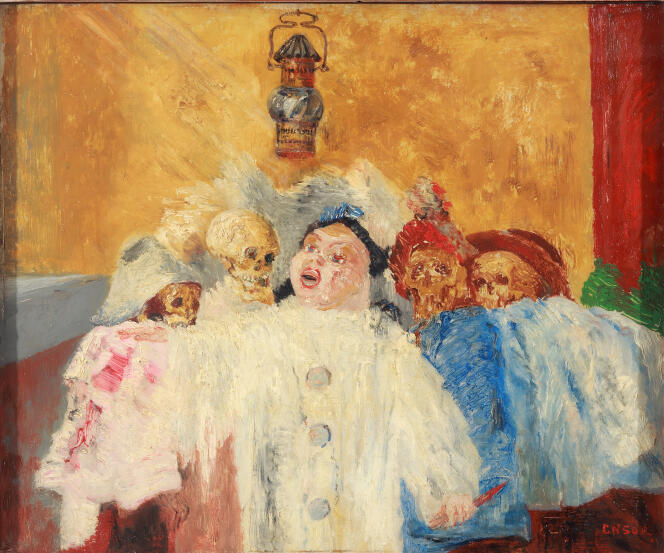


Albert Einstein, during a visit to Ostend, Belgium, once asked James Ensor what he painted. "Nothing," he replied. Yet it's this "nothing" that Belgium – or should we say Flanders as it is footing the bill – is celebrating during 2024, which will be entirely devoted to this singular artist who is fascinating for some, definitively hard to grasp for others.
Ensor is best described as an "artist." Though the tortured soul is first and foremost, for many, the "painter of masks," given how much he populated his canvases with these strange, grimacing accessories, he was also a prolific creator of manuscripts, engravings, works on paper and musical compositions. Celebrating this multifaceted work, 15 exhibitions have been, or will be, organized to commemorate the 75th anniversary of the death of the artist, who was born in Ostend in 1860 and died in 1949 in the same city, which he described as the "queen of capricious seas, soft sands and skies laden with gold and opal."
So it was in this singular city, often idealized by Ensor, that the celebration logically began, though it will find its apotheosis in Antwerp, where the Royal Museum of Fine Arts will be showing his major works beginning on September 28. They will be compared with the work of artists who inspired the painter and whom, not without a touch of megalomania, he intended to confront: Goya, Bosch, Munch, Monet, Manet, and others.
"Why have I been a quarter of a century ahead of modern research in every sense?" Ensor asked, identifying himself with the figure of Christ, whom this agnostic considered "an ideal archetype" endowed with "inescapable meaning." Ensor undoubtedly saw himself as a Christ long crucified by critics, whom he was to reduce in one of his paintings to skulls fighting over a herring – art, Ensor?
"Rose, Rose, Rose, à mes yeux! James Ensor and Still Life in Belgium from 1830 to 1930," which closes on April 14 at Mu.ZEE, the museum of contemporary art in Ostend, was devoted to still lifes, which account for almost a quarter of Ensor's 850 paintings. It was a genre that this opponent of the established order would gradually revolutionize, incorporating macabre objects, unreal colors, and strong carnal undertones.
At James Ensor's House, the residence-turned-museum in Ostend, where the painter lived for 32 years, visitors can discover another major aspect of his work: his self-portraits, an exercise he was particularly fond of. Like Rembrandt, he questioned the dilemma of representation, and he alluded to Rubens in his Self-Portrait with Flowered Hat (1883), unabashedly asserting his affiliation with the greatest Flemish masters. In revolt against the bourgeois order, Ensor long felt despised, and it was only when his talent was finally recognized at the beginning of the 20th century that his creativity declined.
You have 54% of this article left to read. The rest is for subscribers only.
